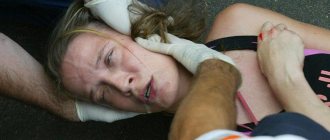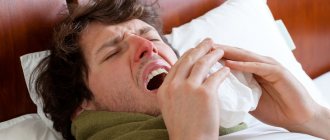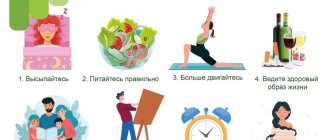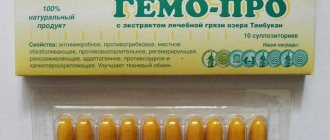The world is just beginning to recover from the coronavirus epidemic, which has literally divided the lives of millions of people into “before and after.”
As a practicing cardiologist at the “Healer” medical clinic in Khasavyurt, I have to deal every day with patients who come for appointments with manifestations of cardioneurosis.
I can assure you that recently this is primarily due to the consequences of the epidemic. The fact is that cardiac neurosis occurs against the background of mental factors or, as experts say, it is a functional cardiac disorder that has a psychogenic etiology.
Types of pathology and its symptoms
In medical sources you can find various names for cardioneurosis, such as: cardiac neurosis or cardiac neurosis, neurocirculatory, vegetative-vascular dystonia, functional cardiopathy or psychovegetative syndrome. These are all different names for the same disease.
The main forms of manifestation of cardioneurosis are:
1. Cardiological, which is expressed by attacks of pain in the heart.
- Panic. This form is characterized by manifestations of a panic attack.
Candidate of Medical Sciences, psychiatrist V. E. Medvedev. In 1871, a disorder was described characterized by complaints of palpitations, pain in the heart area, rapid pulse, a feeling of shortness of breath, headaches, irritability, and sleep disturbances. The author who identified this syndrome, whose name is also used in modern literature (Da Costa syndrome, cardiac neurosis ), emphasizes that the clinical picture is dominated by unpleasant sensations in the chest, which are comparable to typical ischemic pain that develops in the form of attacks or attacks. To designate these conditions in the medical literature, the term “ neurocirculatory (vegetative-vascular) dystonia ” (NCD) has been used for a long time; in foreign sources – “asthenia”. Currently, vegetative-vascular dystonia is a common designation in medical practice for vegetative disorders of various origins and manifestations, but fundamentally functional, caused by a violation of the neurohumoral regulation of vegetative functions.
At the same time, ICD-10 presents a different position: in this classification, built on a syndromic basis, “Somatoform disorders” (F45) occupy the position of an independent taxon, within which the category “Somatoform autonomic dysfunction” (F45.3), including diagnostic rubric “Somatoform autonomic dysfunction of the heart and cardiovascular system” (F45.30). It is under this heading that such forms as cardiac neurosis, Da Costa syndrome, and neurocirculatory asthenia are included. However, the question of the identity of the diagnoses of neurocirculatory dystonia and cardioneurosis remains controversial to this day.
According to the observations of domestic and foreign authors, the number of patients with functional disorders of the cardiovascular system - cardioneurosis ( neurocirculatory dystonia , d'Acosta syndrome, tension syndrome, "soldier's", "broken" heart) reaches 15-30% of patients in specialized cardiology hospitals. According to the results of an epidemiological study (2181 patients, of which 1718 were multidisciplinary hospitals and 463 territorial clinics) carried out at the Scientific Center for Healthcare of the Russian Academy of Medical Sciences, cardioneurosis occurs in 4.7% of patients in the general medical network. Among the outpatient population, this disorder is detected much more often - 15.6% versus 2% in a multidisciplinary hospital.
Cardioneurosis (neurocirculatory asthenia, dystonia, d'Acosta syndrome, tension syndrome, "soldier's", "broken" heart) is an independent psychosomatic disorder of a circle of organ neuroses, in which the formation of autonomic dysfunctions, somatoform disorders and algia occurs according to functional mechanisms.
Manifestation and repeated exacerbations of symptoms in approximately 30% of patients are provoked psychogenically, alcohol abuse, trauma or surgical interventions, repeated pregnancies and childbirth. In other patients, the disease occurs without visible provocation and is often associated with periods of hormonal changes in the body (puberty, first pregnancy) and/or the presence of morphological abnormalities of the heart (mitral valve prolapse, accessory chord).
Patients with cardioneurosis are characterized by the presence of persistent or episodic symptom complexes for at least 2 consecutive years: various somatoform disorders simulating symptoms of diseases of the cardiovascular system (including bodily fantasies, conversions, cardialgia), anxiety-phobic disorders (fear of stroke, heart attack, death from cardiac arrest, etc.), accompanied by sensations of irregular heartbeat with a tendency to tachycardia, revealed during physical examination by lability of blood pressure (hyper/hypotension), acute vegetative symptom complexes simulating urgent cardiovascular pathology (orthostasis, fainting, dizziness), as well as depressive symptom complexes (low mood, apathy, pessimistic assessment of the future, etc.). Other signs of cardioneurosis are symptoms of autonomic dysfunction detected during physical examination: local sweating, marbling or coldness of the extremities, persistent white dermographism; lability and nonspecific changes in the final part of the ventricular complex; temporary reversion of the T wave during exercise testing.
Cardioneurosis with dominance of bodily sensations (sensopathy) is characterized by a predominance of idiopathic cardialgia, tachycardia and bradycardia, orthostatic phenomena, syncope and autonomic disorders (subsyndromal panic attacks). The clinical picture of cardioneurosis with a predominance of anxiety-phobic disorders is characterized by polymorphism. Against the background of anxiety-phobic disorders with fears of cardiovascular catastrophe and death, panic attacks, 5-10% of patients exhibit agoraphobia, as well as bodily fantasies, acute autonomic disorders and symptom complexes of organoneurotic disorders of other organ systems (irritable bowel or bladder syndrome, hyperventilation) . A feature of the clinical picture of cardioneurosis with a predominance of affective disorders is the persistence of cardioneurotic symptoms against the background of depressive phases within the dynamics of affective personality disorders. The picture of depression is dominated by astheno-apathetic or hypochondriacal manifestations.
The criteria for cardioneurosis, taking into account the complexity of psychosomatic relationships, provide for a comprehensive assessment of the condition, with the participation of a psychiatrist and cardiologist. At the same time, the diagnosis of cardioneurosis is a “diagnosis of exclusion”; To stage it, it is necessary to completely exclude the presence of cardiovascular pathology (coronary heart disease, hypertension, heart failure, atrial fibrillation, etc.), as well as any other somatic disease, the features of which could explain the existing symptoms. The diagnosis of NCD (cardioneurosis) is confirmed during repeated examinations, including the assessment of physical, instrumental and laboratory parameters (including routine clinical and biochemical blood tests, lipid spectrum, ECG, ECHO-CG, daily Holter ECG and blood pressure monitoring, treadmill, peak expiratory flow (PEF), capnography study, blood gas composition, voluntary hyperventilation test, spirometry). To exclude organic pathology of the brain, MRI and EEG studies were performed. In addition, during a psychopathological examination, it is necessary to exclude the manifestation of endogenous psychosis (schizophrenia, schizoaffective/affective psychosis).
Therapy of cardioneurotic disorders includes both various methods of psychotherapy and the prescription of psychotropic drugs. It is advisable to begin psychopharmacotherapy already at the stage of examining the patient, at the first signs of symptoms of anxiety or depression. At the same time, in order to reduce the possibility of the influence of synthetic psychotropic drugs on the patient’s clinical and laboratory parameters, herbal remedies (valerian, St. John’s wort, Persen, etc.) can be recommended. If therapy is ineffective, the progression of a psychopathological disorder, depression or severe anxiety disorders, it is necessary to use combination or monotherapy with antidepressants (taking into account the effectiveness/tolerability ratio) of the group of selective serotonin reuptake inhibitors (paroxetine, sertraline, fluvoxamine, citalopram, S-citalopram, fluoxetine) or double-acting (milnacipran, duloxetine, venlafaxine), anxiolytics (non-benzodiazepine and benzodiazepines), low-dose antipsychotics (sulpiride, quetiapine) and nootropic drugs.
Make an appointment for a consultation with psychiatrist V.E. Medvedev.
Signs of the disease
Among the most common symptoms of the disease are:
- pain in the chest area. The pain can be pressing and aching. Often, clinic patients complain of piercing, sharp pain in the heart area, to the point where it feels like the heart has stopped, followed by an increase in heart rate;
- physical or mental stress leads to heart rhythm disturbances or increased heart rate;
- a feeling of chills or, conversely, a rush of heat, sweating, possible shortness of breath, a feeling of lack of air;
- high blood pressure, often accompanied by headache, weakness, dizziness;
- panic, fear of death, anxiety, sleep disturbances.
Tell us in more detail about vegetative failures, what causes them and how they manifest themselves?
To begin with, we should remember that the main function of the autonomic nervous system (ANS) is to regulate the activity of all internal human organs. Its two departments are responsible for this, acting in different directions: • Sympathetic, when activated, there is an increase in heart rate (tachycardia), increased blood pressure and body temperature, tremor, etc. • Parasympathetic, responsible for slowing the heart rate (bradycardia), lowering blood pressure and temperature , decreased activity, etc.
With balanced and synchronized work of both departments, the body functions like a well-oiled clockwork mechanism. Adequately responds to environmental changes, is resistant to stressful situations, has a strong immune system, all its reactions are aimed at protecting the body from negative influences and survival.
When the coordinated work of the ANS departments is unbalanced, the body loses many of its advantages in this duel with the outside world, and with pronounced autonomic dysfunction, various diencephalic crises can develop: • With predominant and excessive activity of the sympathetic ANS, a sympathoadrenal crisis occurs in the form of an attack of headache and heart pain, tachycardia , increased blood pressure and temperature, chills, flushing or pallor of the face. All these phenomena are often accompanied by fear of death and anxiety for one’s life. And this is quite understandable. After all, normally a person does not feel his heart, except under severe anxiety and stress. You can imagine how he feels the whole range of symptoms that have befallen him, especially if he is experiencing a crisis for the first time. Fear can be so strong that it forever settles in a person’s memory and plunges him into constant anxious anticipation of a repetition of the attack. It turns out to be a vicious circle: attack → fear → anxiety → new attack. It is almost impossible to interrupt this cycle without the help of specialists and appropriate treatment. • With hyperactivity of the parasympathetic division of the ANS, we are dealing with the so-called vagoinsular crisis. Its main manifestations are sudden severe weakness up to fainting, darkening of the eyes, sweating, dizziness, nausea, decreased blood pressure and body temperature, bradycardia (slow heart rate).
With particularly severe vegetative failures, accompanied by severe fear and panic, we are already dealing with panic attacks, which are easier to prevent than to stop. But this is a topic for another discussion.
Autonomic instability most often develops after infectious diseases, head injury, severe stress, during hormonal changes and taking hormonal medications.
How does pain in the heart during ischemia differ from cardioneurosis?
Experienced cardiologists can name a number of differences in the pain syndrome that manifests itself in coronary heart disease (CHD) and cardiac neurosis. Here are the main ones:
- With cardioneurosis, the pain has a clear localization, and with ischemic heart disease, pain can cover the entire chest and even radiate to the back area.
- A painful attack with cardioneurosis, as a rule, lasts less than an hour, and with ischemia it lasts much longer (from several hours to several days).
- With cardiac neurosis, pain arising from psycho-emotional stress can easily be relieved after relaxation, which does not happen in the case of cardiac ischemia.
- Nitroglycerin is effective in relieving pain from ischemia, but does not help with cardioneurosis, in which sedatives and hypnotics help.
- During studies (ECG, ultrasound), specialists in functional diagnostics of medical centers confidently diagnose the presence of pathological changes from coronary artery disease, and if pain in the heart is neurotic in nature, then violations are not detected during such studies.
What examinations are necessary to make a reliable diagnosis of cardioneurosis?
In order to exclude organic heart pathology and other serious diseases hidden behind a variety of symptoms, the patient must be observed for at least 2 months. At the same time, the connection of attacks with stressful situations and circumstances that have a stimulating effect on the patient’s psyche is of decisive importance in favor of cardioneurosis. Only after excluding structural changes and making sure of the functional nature of the symptoms can a diagnosis of cardioneurosis be made.
Specifically, the examination plan should include the following activities: • Detailed and thorough history taking. • Physical (physical) examination of the patient with determination of signs of asthenia, excessive sweating, skin color, etc. • Electrocardiographic examination (one-time and in the form of daily monitoring), ultrasound of the heart, ultrasound of the cervical vessels, etc. • Breathing tests to study the function of external respiration . • Clinical and biochemical blood test with determination of AST, LDH, lipid profile, C-reactive protein, creatine kinase, thyroid hormones and potassium. To exclude the diagnosis of acute myocardial infarction, cardiac troponins and myoglobin are determined. • FGDS for severe dyspeptic syndromes. • Electroencephalogram for studying the brain and identifying its pathologies (epilepsy, neoplasms, inflammatory processes and vascular disorders).
Consultations with specialized specialists are required - cardiologist, neurologist, endocrinologist, psychotherapist, gastroenterologist, etc.
Causes of the disease and methods of treatment
There are many different reasons that can cause the pathology of functional cardiopathy, but the most common in practice are the following:
- chronic stress. This can happen due to conflicts at work, an unfavorable psychological situation in the family, long-term painful conditions, etc.
- all kinds of phobias, fears, anxieties, depression and panic attacks;
- chronic infections and toxic effects on the body;
- hormonal changes, which, for example, can be caused by pregnancy or menopause;
To effectively carry out a course of therapy, a qualified attending cardiologist uses a variety of modern options for complex and auxiliary treatment, including:
- Psychotherapy. Cognitive-behavioral psychotherapy has proven to be the most effective method.
- Medication. Antidepressants and sedatives are prescribed. This method is considered auxiliary for cardiac neurosis.
- Reflexology.
- Physiotherapy;
- Spa treatment.
Nukhova Aminat Idrisovna, cardiologist.
Cardioneurosis: causes
The immediate cause of the characteristic manifestations of cardioneurosis are disturbances in the body’s regulatory systems (nervous, immune, endocrine, cardiovascular), which are responsible for its response to external influences and maintaining internal stability. These disorders, in turn, arise from a combination of internal conditions and external provoking factors. The first include genetically predetermined constitutional characteristics of a person (types of physiological and mental reactions, including some character traits - mental instability, a tendency to panic, suspiciousness, anxiety, etc.). The second includes physical and mental trauma; intoxication caused by acute and chronic diseases, poisoning, unhealthy lifestyle, etc. All this leads to chronic stress - “fertile soil” for the development of all types of neurotic disorders.
Gymnastics for heart neurosis
Experts have developed a special complex of physical therapy for this pathology.
- Lunges for 1-1.5 minutes, first with one leg, then the other.
- Deflection of the torso. The leg is pulled back, the upper body also bends back. Then the same is done with the other leg. The exercise is repeated 5-8 times on each leg.
- Squat on one leg, while holding onto a chair. Repeat 2-5 times with each leg.
- Rotational movements of the body, first in one direction, then in the other. Repeat 3-6 times.
- Imitation of boxer punches. You need to breathe in a random order. Make 8-15 blows with each hand.
In some specialized neuropsychiatric clinics, there are special neurosis departments in which patients with different variations of this disease are treated. Often, patients are brought to such departments by the presence of panic attacks, which can often be combined with migraines or other pathologies that debilitate the patient.
What is depression really?
This is a long-term (2 weeks or more) pronounced decrease in mood, which is accompanied by several additional symptoms: decreased activity, slower mental activity, lack of joy in life. That is, if you are no longer touched by the usual joys - hobbies, family, get-togethers with friends, then this is a reason to think, monitor your condition and, perhaps, consult a doctor.
If your usual joys no longer touch you, then this is a reason to think about it and, perhaps, consult a doctor.
True depression is a serious and often severe illness that requires mandatory treatment by a psychiatrist with the prescription of special medications.
Prevalence
Symptoms of cardioneurosis affect from 21 to 56% of the population. Among hospital patients, cardialgia of a neurotic nature is detected in 80%. At an appointment at the clinic - up to 35%.
In specialized cardiology departments, after a detailed examination, the final diagnosis of “Cardioneurosis” is made in 15 to 30% of discharged patients. Over the past 10 years, there has been an increase in the frequency of detection of pathology.
Among people with various chronic diseases, the frequency of cardioneurotic disorders is 4.7%, often “competing” in terms of complaints with the underlying disease.









